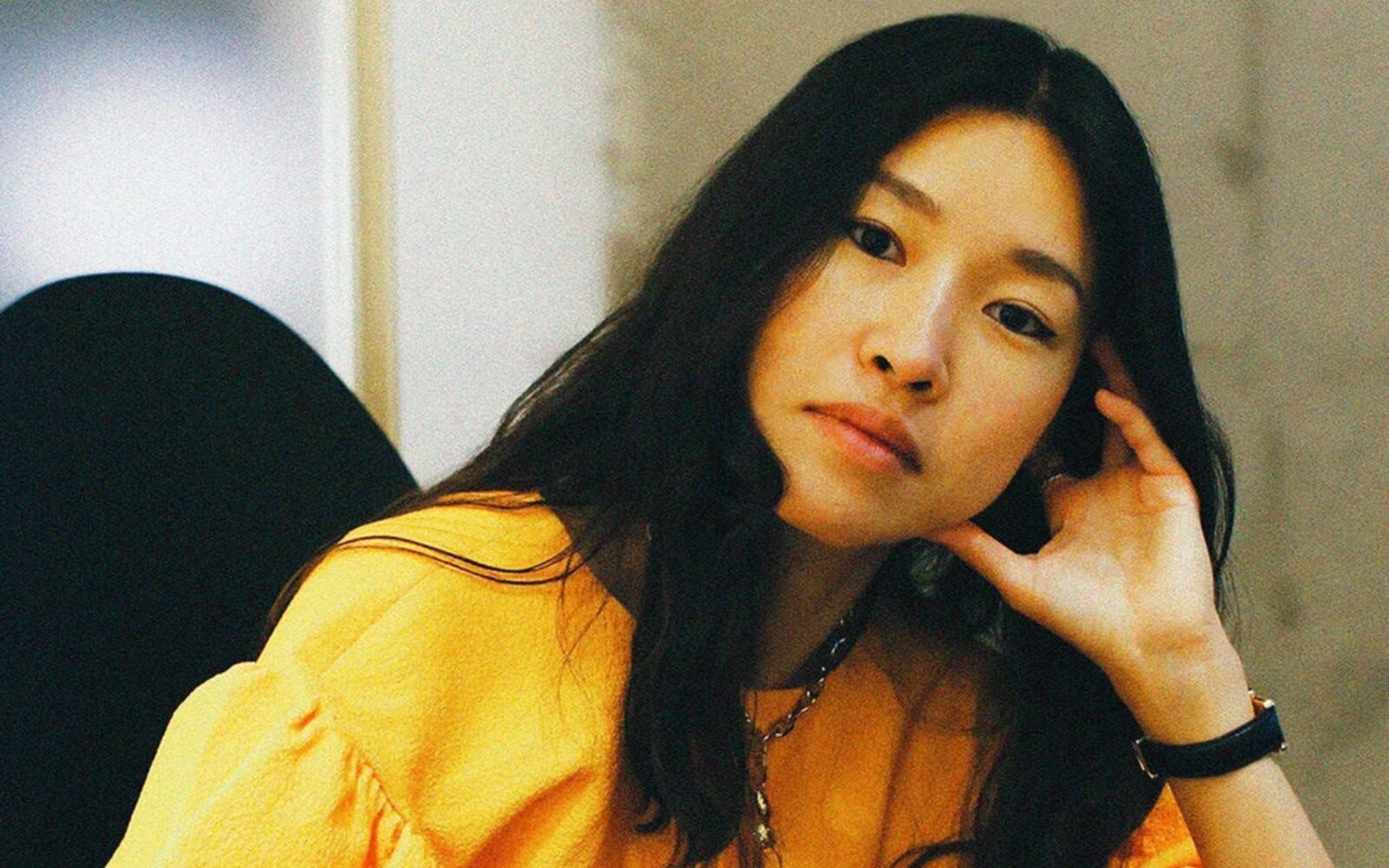Rejina Pyo’s Spring Summer 2021 collection is a celebration of sunshine, the seaside and unexpected silhouettes in bold, saccharine shades, but it’s also rooted in resilience and staying true to oneself, despite the odds
Everyday life used to be the main source of inspiration for Rejina Pyo’s designs, but having spent the past year in lockdown, the London-based Korean designer’s aesthetic has shifted gears slightly, and her latest collection taps into her longing for a post-pandemic summer by the sea. Here she tells MOJEH why she believes fashion still has the capacity to “transform and transport us”, even in the midst of so much uncertainty.
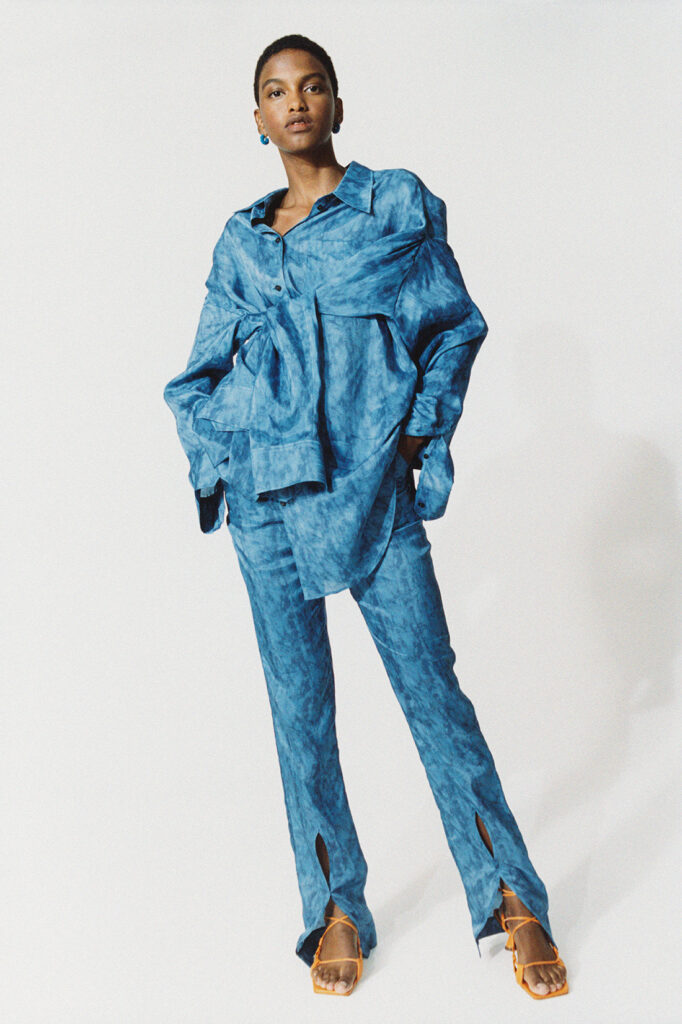
What’s the main inspiration behind SS21?
I have always put a lot of thought into how my designs are worn in everyday life, however, this season was designed in lockdown, so I was really dreaming of all the places I have missed, fantasising of a post-pandemic summer by the sea. I wanted to highlight that while so much has changed for many of us over the last year, fashion still has the ability to transform and transport us.
Tell us a little bit about how you approach the design process.
I like to take conceptual ideas or artistic references and funnel them into something wearable using sculptural silhouettes, playful details and offbeat textures or colours. I would sum-up the aesthetic as timeless and effortless with a twist.
Can you tell us about the use of colour in the collection?
The palette was inspired by visits to Italian gelaterias, the bright colours of the shop fronts and interiors, and of course the many delicious gelato flavours – lemon and peach sorbets, chocolate, and pistachio.
Can you tell us about the choice of cut and silhouette?
This is one of our most sensual collections, with clingy dresses, exposed shoulders, sheer trousers and crop tops. This is contrasted with more voluminous silhouettes, including our signature exaggerated sleeves, new puffy sandals, oversized shirting, and lightweight suiting, complete with our custom handcrafted buttons.
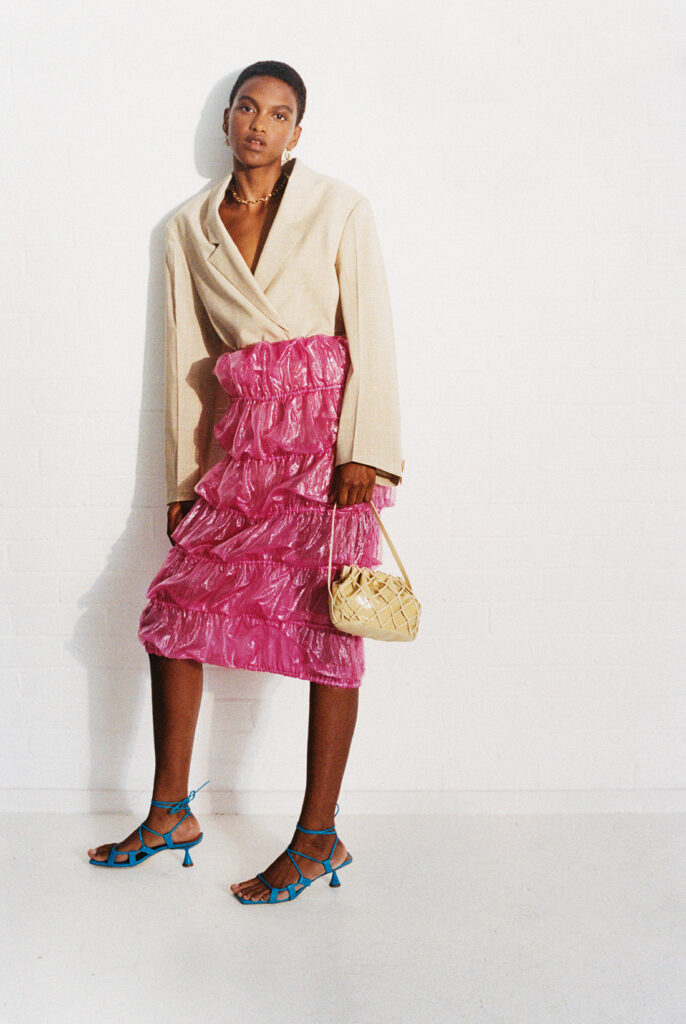
You’re launching swimwear this year. Talk us through the aesthetic and tell us what was the driving force behind the decision to launch?
Like the rest of the collection, I wanted to create swimwear which looks and feels effortless, that has longevity and isn’t trend led but still has interesting shape, detail and colour. I particularly love the versatility of the pieces in this collection – the straps can be worn crossed at the front, back, or they can be worn straight over the shoulders.
Where and how have you been spending your time during the pandemic?
We spent the first lockdown with my husband’s family in Ireland, working remotely with the team. We then spent the summer in Seoul as things had opened up and we could work from our office there. We are now back in London, working from the studio.
What have you taken from the past year, both professionally and personally?
My family is happy and healthy and I feel incredibly fortunate to be able to say that. Spending time with family, reassessing daily priorities and questioning my work-life balance has been enlightening. I hope to be able to bring those changes into my everyday life post-lockdown.
You often reference your mother as a key influence in your decision to be a designer, can you tell us about that?
My mum worked as a designer when I was younger and I was fascinated by what she did. I was particularly obsessed with her sketchbook, which she used to hide from me as I loved looking through it and attempting my own designs.
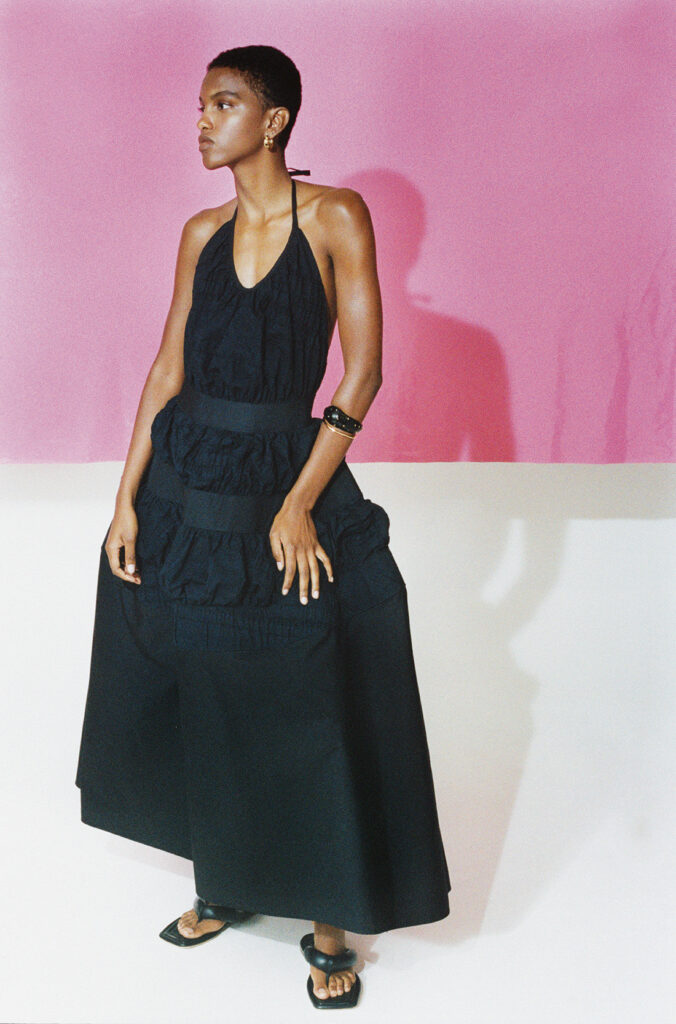
You were born and raised in Seoul. What did you most love about it and in what ways has the city and your childhood influenced the Rejina Pyo aesthetic?
I think Korea will always influence details in the designs, whether it’s the cut of a shirt or a design shape, such as our Nane bag being inspired by Korean bojagi, where a piece of cloth is used to wrap gifts, with a large knot on the top.
You once said that your Saint Martins tutors deemed you “too gentle”. In reality, how do you think this trait has positively served you and the brand?
Ultimately, you have to be yourself. If you try to be someone you’re not, it isn’t really sustainable. When I was studying at CSM I was viewed by some tutors as a nice, quiet Korean girl, and the assumption was that I might not be able to handle the often harsh realities of the industry when I graduated. However, being gentle doesn’t necessarily mean you are weak or afraid to voice your own opinion, and I don’t think you need to be the loudest person in the room to get things done; quite the opposite, actually.
What has been the most rewarding moment of your career as a designer so far?
The most rewarding moments to me are when I see a regular woman wearing Rejina Pyo on the street, going about her life in the clothes. It is always a surreal experience, even now. I also feel that keeping the business self-funded since the beginning, and seeing our team grow and thrive feels like a massive accomplishment.
What has been the most difficult moment?
In the first few years, I was working 24/7. Starting a brand is incredibly challenging, there are so many parts to navigate beyond designing the product – finding manufacturers and suppliers, overseeing production, sales, PR and social media. It was a big learning curve.
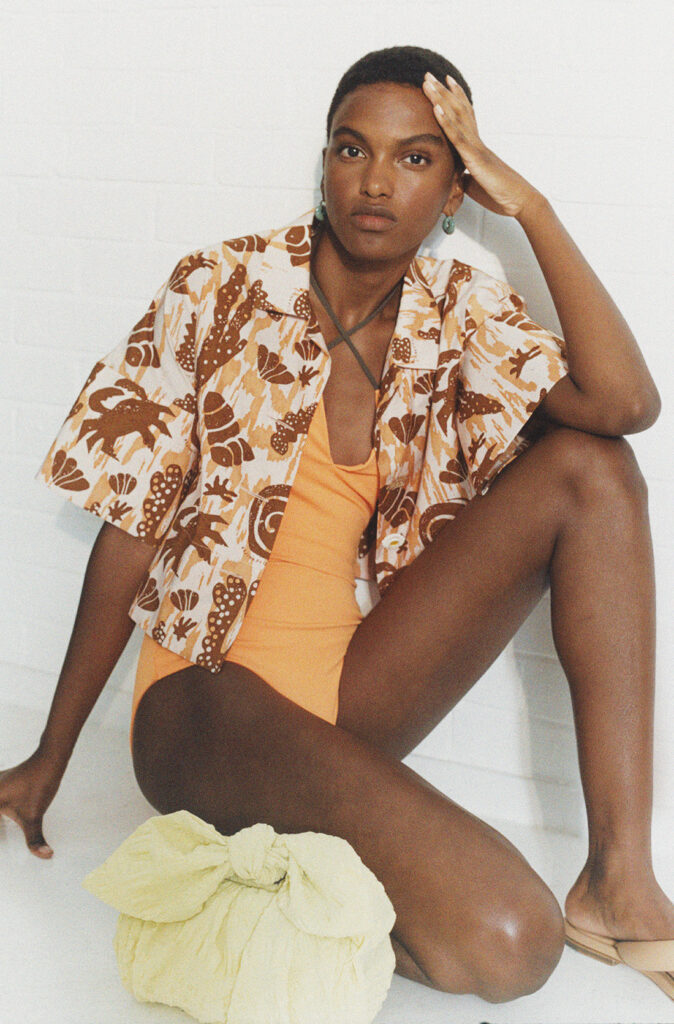
What was your biggest learning from working with Roksanda Ilincic?
Although I had worked with other companies previously, Roksanda was my first design role after completing my MA at CSM and it was my first insight into what it was like for a London-based private fashion label. I got to see first-hand just how important all the other (non-design) elements of running a business are.
Your collections are celebrated for being luxurious but affordable. Why is the latter so important to you?
Part of why I wanted to start my own brand was because at the time there was a gap in the market. Designer brands were too expensive, my friends and I could not afford to buy from them and the high street was driven by quick trends and the quality was lacking. I wanted to create pieces my friends and I would wear, pieces that are special but timeless, that are great quality but more accessible.
Read Next: The Shoot: Look On The Bright Side With Vibrant Hues And Oversized Silhouettes

